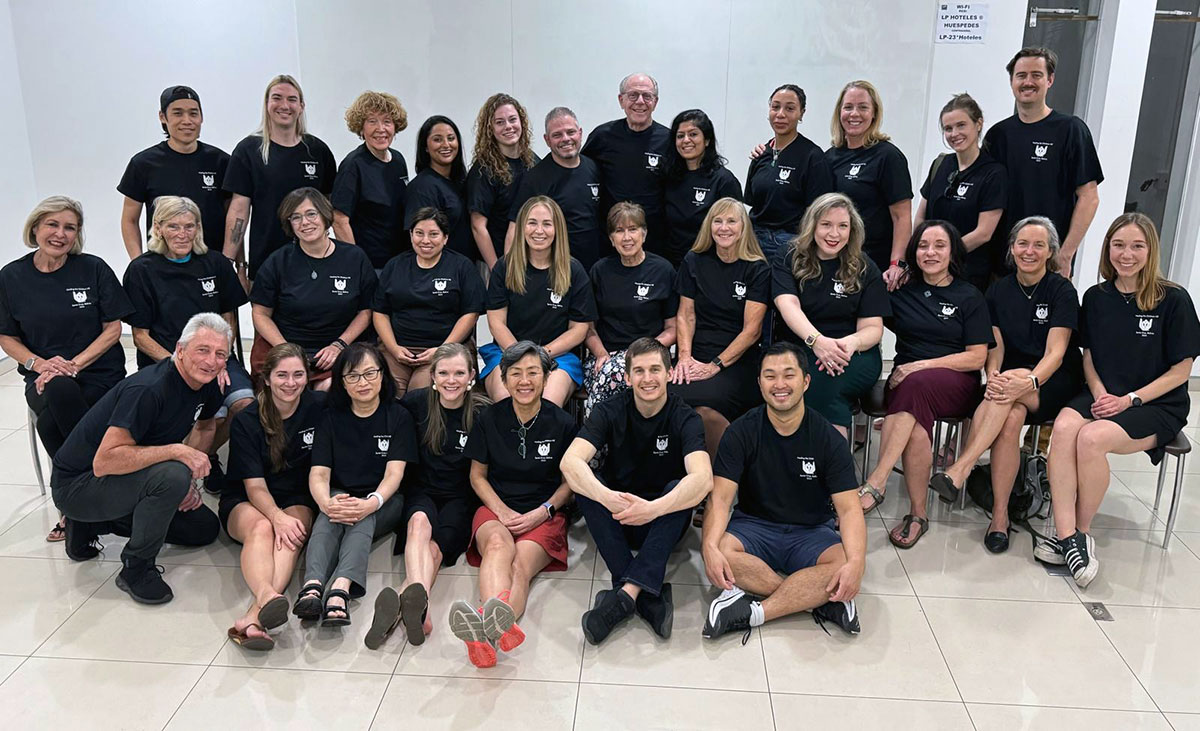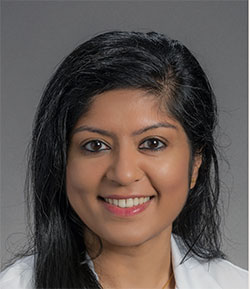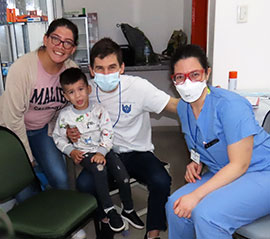Becoming a certified Oral and Maxillofacial Surgeon takes a substantial amount of time, energy and dedication. Trainees in the UW Oral and Maxillofacial Surgery (OMS) residency program rarely have extra time to devote to activities outside of their practice, which is why it’s all the more impressive that residents are lining up to follow Dr. Austin Gaal on his outreach trips to Bolivia, and beyond, to treat children with cleft lip and palate.
More prevalent in developing countries, cleft lip and cleft palate are congenital conditions that occur when the structures of a baby’s upper lip or palate fail to join together during pregnancy. The surgeries to fix cleft lip and palate not only involve very specific and complex training, but also require coordinated timing and multi-disciplinary involvement.

In the country of Bolivia, socio-economic struggles have lead to widespread lack of medical resources and training, furthering the difficulties of cleft treatment. “Imagine that lifestyle, the lack of communication from nasal to oral, and just all those food and breathing difficulties,” said Dr. Gaal. “To be able to vastly improve [Bolivian children’s] quality of life, including some kids who have had multiple failed attempts to fix their palate, and really make a difference for them is very, very meaningful.”
Dr. Gaal is an alumnus of and a Clinical Assistant Professor in the UW OMS residency program. During his residency he developed a defined passion for working with kids and adults with cleft lip and palate, so he pursued fellowship training in surgical cleft care, eventually returning to Seattle to establish his practice. He now helps lead the Central Washington Cleft Palate team, the Yakima Cleft Lip and Palate team, and he has a busy, well-rounded practice in OMS, with a special focus on helping kids and adults with cleft and craniofacial differences.
After realizing that there were opportunities to be more involved in the training of the OMS residents and expand cleft care, Dr. Gaal joined UW as full-time faculty in March 2023, and now works closely with all resident levels. “I don’t have a class or a blackboard,” said Dr. Gaal. “I scrub in with [residents] and teach them one-on-one.”

But for Dr. Gaal, a steady career in cleft care and clinical teaching does not tell the full story. Five years ago, he joined a team of 20-30 cleft care specialists on their week-long trip to Santa Cruz, Bolivia. Led annually by the organization Healing the Children Northeast, the team partners with the local Rotary International group in Santa Cruz to treat children with cleft lip and palate. Some of their patients traveled for days to the city from extremely remote regions of the country.
“I can’t fix my car to save my life,” said Dr. Gaal. “But I know how to do cleft lip and palate treatment. It’s a very specific skill set, and it just feels right that I can use my skills to treat such an underserved group.”

He’s not alone in his interest in cleft treatment. Dr. Aparna Bhat, a fifth-year UW OMS resident, joined Dr. Gaal on his most recent trip to Bolivia this past January.
“I, personally, am interested in pursuing a career in cleft and craniofacial surgery,” said Dr. Bhat. “For me this was a great experience to be able to gain a better appreciation and understanding of what the surgeries entailed, as well as being able to participate and operate on these patients.”
In addition to the surgical experience, Dr. Bhat relished the opportunity to better understand how organizations like Healing the Children and the Rotary involve local surgeons and maintain a constant presence in the community to coordinate post-operative follow-ups.
“The majority of patients with cleft lip were younger than two years old,” said Dr. Bhat, “while those with cleft palate were typically older, ranging from one to ten years old. For patients with cleft palate, some of these patients, especially the older children, were prior repairs that had failed in the past.”

Dr. Bhat was the second UW OMS resident to join Dr. Gaal on a trip to Bolivia. Dr. Leena Zurayk was the first, having joined him the year prior. With a high level of interest amongst many residents, Drs. Bhat and Zurayk were chosen based on their advanced standing.
Dr. Gaal has also worked with Free to Smile on their trip to Guatemala, typically in the fall, and this September he will join Project Vietnam on their expedition to Saigon. That means Dr. Gaal will be committing a total of three weeks this calendar year towards international outreach.
Each trip partners with the city’s local medical champions to assist in the development of their communities’ cleft care centers, all of whom have put in years of hard work to establish what is there today. Guatemala has a hospital that was built just for cleft care. Bolivia is well on the way towards one, and Vietnam has had their site established for over 20 years. Local surgeons routinely scrub in with Dr. Gaal, and both parties engage in an exchange of techniques, practicing cultural respect throughout.
“My hope is that if I do three [trips], and there are three residents per class, I can take one per trip,” he said. “That way every chief resident has the chance to get that exposure.”

Dr. Bhat and Dr. Zurayk both received a scholarship for their trips through the American Association of Oral and Maxillofacial Surgeons (AAOMS). The scholarship is supported by an OMS national surgery foundation grant in order to support trainees in further research and service.
The enthusiasm for these outreach trips from residents is only ramping up, as more and more of them begin to understand why Dr. Gaal chooses to spend as much time as he does on this cause.
“When I’m taking care of a kid with a cleft, I feel purpose,” said Dr. Gaal. “I want to wake up in the day and have a meaning, and it’s just so gratifying to help establish good quality cleft care for folks and to see the impact it has on them.”